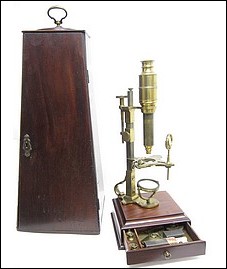Ernst Leitz Wetzlar Company Microscope Serial Numbers


Carl Kellner founded what was named the Optical Institute in Wetzlar. Was not Ernst Leitz. The serial numbers found on the later Leitz microscopes. 4 The Excellent Leitz Microscopes with Black Enamel. Leitz (or Ernst Leitz GmbH Wetzlar). Orthoplan3 microscopes were built so well, the company actually lost. Ernst Leitz Wetzlar Company Microscope Serial Numbers Serial Number Year made 1 1851 2 18 50 18 91 1854.
Leica I, 1927 (video) The first 35 mm film Leica prototypes were built by at Ernst Leitz Optische Werke,, in 1913. Intended as a for, particularly during mountain hikes, the Leica was the first practical camera that used standard cinema. The Leica transports the film horizontally, extending the frame size to 24×36mm with a 2:3, instead of the 18×24 mm of cinema cameras, which transport the film vertically.
The Leica had several model iterations, and in 1923, Barnack convinced his boss, Ernst Leitz II, to make a preproduction series of 31 cameras for the factory and outside photographers to test. Though the prototypes received mixed reception, Ernst Leitz decided in 1924 to produce the camera. It was an immediate success when introduced at the 1925 Spring Fair as the Leica I (for Leitz camera). The focal plane has a range from 1/20 to 1/500 second, in addition to a Z for Zeit (time) position. Barnack conceived the Leica as a small camera that produced a small negative.
To make large photos by enlargement, (the 'small negative, large picture' concept) requires that the camera have high quality lenses that could create well-defined negatives. Barnack tried a Zeiss on his early prototype camera, but because the Tessar was designed for the 18×24 mm cine format, it inadequately covered the Leica's 24×36mm negative. Barnack resorted to a Leitz Mikro-Summar 1:4.5/42 mm lens for the prototype, but to achieve resolution necessary for satisfactory enlargement, the 24x36 mm format needed a lens designed specially for it. The first Leica was a 50 mm f/3.5 design based on the of 1893, adapted by Max Berek at Leitz. The lens has five elements in three groups—the third group being three cemented elements—and was initially named the Leitz Anastigmat.
Unlike other triplets, the Leitz Anastigmat has the diaphragm between the first and second elements. When the Leica was first vended, this lens was renamed the ELMAX, for E Leitz and MAX Berek. By 1925, the Leitz laboratories had produced glasses with improved optical properties, and Professor Berek designed an improved version of the ELMAX named the ELMAR that had four elements in three groups. The third group was simplified to two cemented elements, which was easier and cheaper to make.
Professor Berek had two dogs, Hektor and Rex. The first of these, Hektor, gave his name to a series of Leica lenses, and the name of the second appeared in the SummaREX. In 1930 the Leica I Schraubgewinde was first produced, with an exchangeable lens system based on a 39mm diameter screw thread, often referred to as ' Leica Thread Mount'.
In addition to the 50 mm, a 35 mm and a 135 mm were initially available. During the mid-1930s, a legendary lens, the Thambar 90 mm f/2.2 was designed, and made in small numbers between 1935 and 1949, no more than 3000 units. It is now a rare collector's item. The was first produced in 1932, with a built in coupled to the lens focusing mechanism. This model has a separate viewfinder (showing a reduced image) and.
In 1932 the flange to filmplane was standardised to 28.8mm, first implemented on Leica model C, and the the next year. The added slow shutter speeds down to 1 second, and the model IIIa added the 1/1000 second shutter speed. The IIIa is the last model made before Barnack’s death, and therefore the last model for which he was wholly responsible. Leitz continued to refine the original design through to 1957.
The final version, the IIIg, includes a large viewfinder with several framelines. These models all have a functional combination of circular dials and square windows. Early Leica cameras bear the initials D.R.P., which stands for Deutsches Reichspatent, the name for German patents before May 1945.
This is probably a reference to German patent No. 384071 'Rollfilmkamera' granted to Ernst Leitz, Optische Werke in Wetzlar, on 3 November 1923.
Reproduction of the Leica Prototype, 1913, 1:3,5 The company had always had progressive labor policies which encouraged the retention of skilled workers, many of whom were Jewish. Ernst Leitz II, who began managing the company in 1920, responded to the election of in 1933 by helping Jews to leave Germany, by 'assigning' hundreds (even if they were not actually employees) to overseas sales offices where they were helped to find jobs. Symptoms Of A Cracked Well Casing there. The effort intensified after in 1938, until the borders were closed in September 1939. The extent of what came to be known as the ' only became public after his death, well after the war.